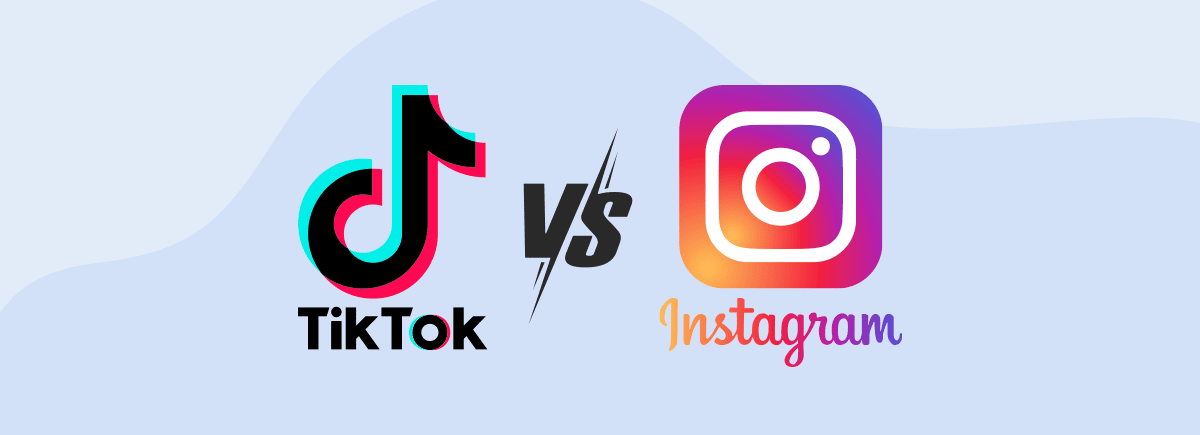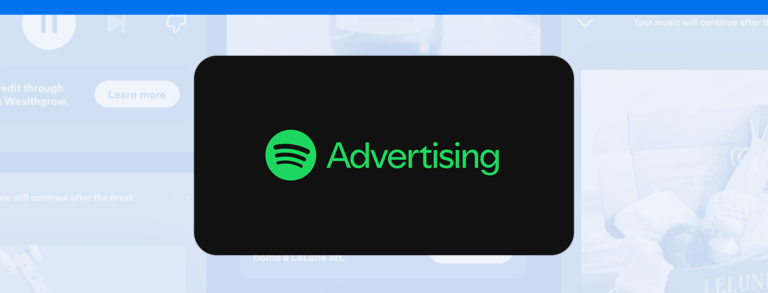Check out the comparison we’ve prepared for you: TikTok vs. Instagram – features, audience, and engagement
TikTok and Instagram are both quite influential social networks where content creation and brand building thrive.
While both platforms boast immense popularity, they differ significantly in content format, display algorithm, audience, and various user experience features.
Our in-depth article aims to shed light on the similarities and differences between TikTok and Instagram, giving you precious insights into which platform aligns best with your customers’ preferences and interests. Keep reading!
Audiences
Let’s start by discussing the contrasting audiences of TikTok and Instagram when it comes to age groups and user behavior.
TikTok predominantly attracts a younger user base, primarily Gen Z and Millennials. According to the Global Digital Overview Report 2022, as revealed by DataReportal, the platform holds immense appeal for teenagers and young adults, with up to 43% of users aged 18 to 24 years old.
This youthful bias sets the stage for a culture of trends, viral challenges, humor, and creativity, resulting in pretty diverse video content.
On the other hand, Instagram boasts more varied audience age groups. The platform’s popularity extends to a wide spectrum of users, from teenagers to older adults. Its status as a lifestyle network makes for a highly inclusive environment and allows users to share moments from their personal lives, wellness-related content, and much more.
Post formats
Let’s delve into the impact of content formats on the audiences of these two networks. TikTok stands out through its signature format: short, vertical videos that offer interactive features like music, voiceovers, visuals, text overlays, and more. This immersive format fuels creative expression and engagement.
In contrast, Instagram presents a diverse array of post formats to users. The platform encompasses the timeless appeal of photos, the ephemeral nature of Stories (which last for 24 hours), the long-form videos of IGTV, and the short, snappy videos of Reels—reminiscent of TikTok.
Resources for content production
TikTok is well-known for its user-friendly and creative editing features, designed to ensure a seamless and speedy experience with a plethora of tools, such as cuts, special effects, stickers, text overlays, and voiceovers.
The platform also has an extensive music library, so users can easily incorporate popular soundtracks into their videos. They can also use their own audio, leveraging special effects and augmented reality (AR).
On Instagram, the editing features cater to longer photos and videos. Users can add filters, adjust brightness, contrast, saturation, and crop content. You can also add text, stickers, drawings, and music—although it’s worth noting that the audio library on Instagram is comparatively more limited than TikTok’s.
Content recommendation algorithms
Both platforms employ machine learning algorithms to analyze user behavior and deliver content tailored to individual preferences. However, there are a couple of significant differences.
TikTok is known for its highly efficient recommendation algorithm, which relies on a user’s scrolling behavior. It meticulously scrutinizes the videos users watch, like, share, comment on, and follow, and the time spent watching each video.
In contrast, the Instagram algorithm centers around interests and relationships. It evaluates user behavior, including the profiles they follow, posts they like, comments they make, saved posts, and overall interactions within the platform. Additionally, the algorithm understands that users prefer fresh content when visiting their feeds.
Paid media
Both TikTok and Instagram allow advertisers to leverage paid media to reach and promote their content to a broader audience. But here are some differences:
TikTok Ads offers a range of advertising possibilities, allowing brands to showcase their ads in users’ “For You” feeds and across the TikTok family of apps, encompassing various entertainment, news, and content discovery platforms.
Advertisers can explore different formats, such as horizontal, vertical, or square videos and images. It also provides tools for audience segmentation, considering geographic, demographic, and behavioral factors.
On the other hand, Instagram offers a more diverse array of advertising options, including photos, videos, carousels, stories, and even in-app purchase ads.
These advertising features are managed through Meta Ads, empowering advertisers to fine-tune their targeting settings, including targeting followers of specific profiles, customer lists, remarketing, and dynamic remarketing.
Monetizing Opportunities
Monetization is crucial for content creators on both TikTok and Instagram, as paid partnerships continue to allure brands seeking influential collaborations.
TikTok recognizes the significance of this aspect and offers a dedicated tool, the TikTok Creator Marketplace (TTCM), which acts as a liaison between companies and potential influencers.
TikTok’s partnership program also provides opportunities for monetization by allowing creators to earn a share of revenue generated from ads and virtual gifts bestowed by their followers during live streams.
On Instagram, the monetization focus shifts toward content creators with business profiles. Creators can leverage resources like Instagram Shopping, making direct sales easier through the app. Sponsored partnerships between brands are another opportunity for monetization, where content creators can promote products or services in their posts.
Metrics and Insights
Last but not least, let’s talk about the metrics and insights provided by Instagram and TikTok. These are crucial for evaluating content performance and understanding audience engagement.
Fortunately, both platforms offer robust analytics tools that enable comprehensive analysis of profiles, top-performing posts, and audience behavior. These tools provide valuable insights, equipping content creators with a clearer understanding of the strategies to pursue success on social media.
It’s worth noting that both Instagram Insights and TikTok Analytics seamlessly integrate with Reportei, streamlining the process of capturing data and creating personalized reports.
TikTok vs Instagram: which is the best alternative for your digital marketing strategy?
After analyzing the wealth of information on TikTok vs. Instagram, you’re probably wondering which platform is the better choice.
The truth is, they’re distinct. So, deciding where to post content depends on your marketing objectives and target audience.
Consider the type of content you’ll be producing. TikTok revolves entirely around videos, while Instagram offers a broader range of post possibilities.
If your audience is present on both platforms, you can develop strategies that complement each other, amplifying your online presence. Brands and creators often repurpose TikTok videos on Reels (after removing the TikTok watermark, of course).





